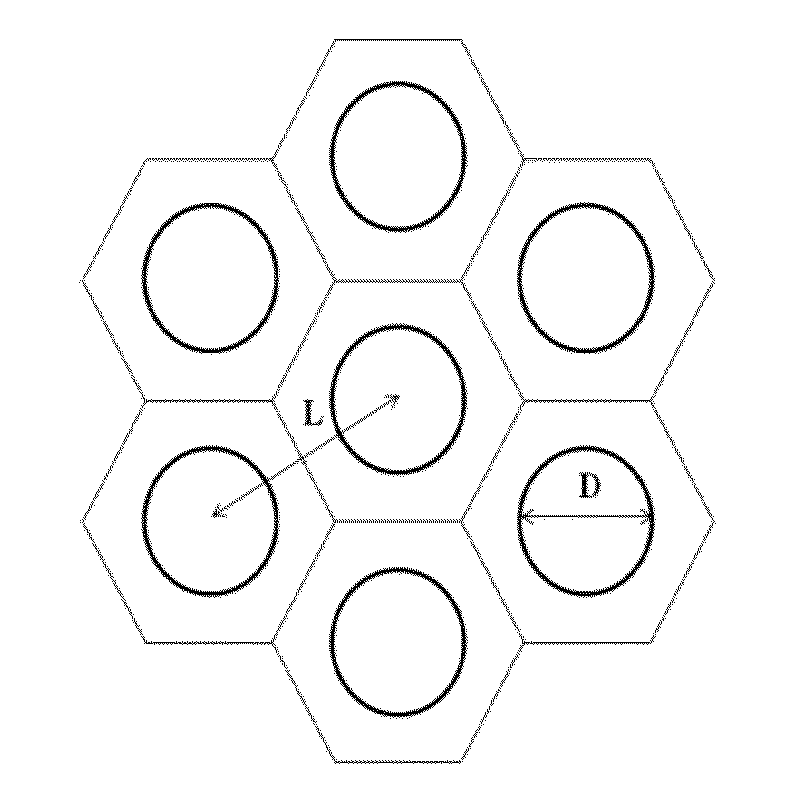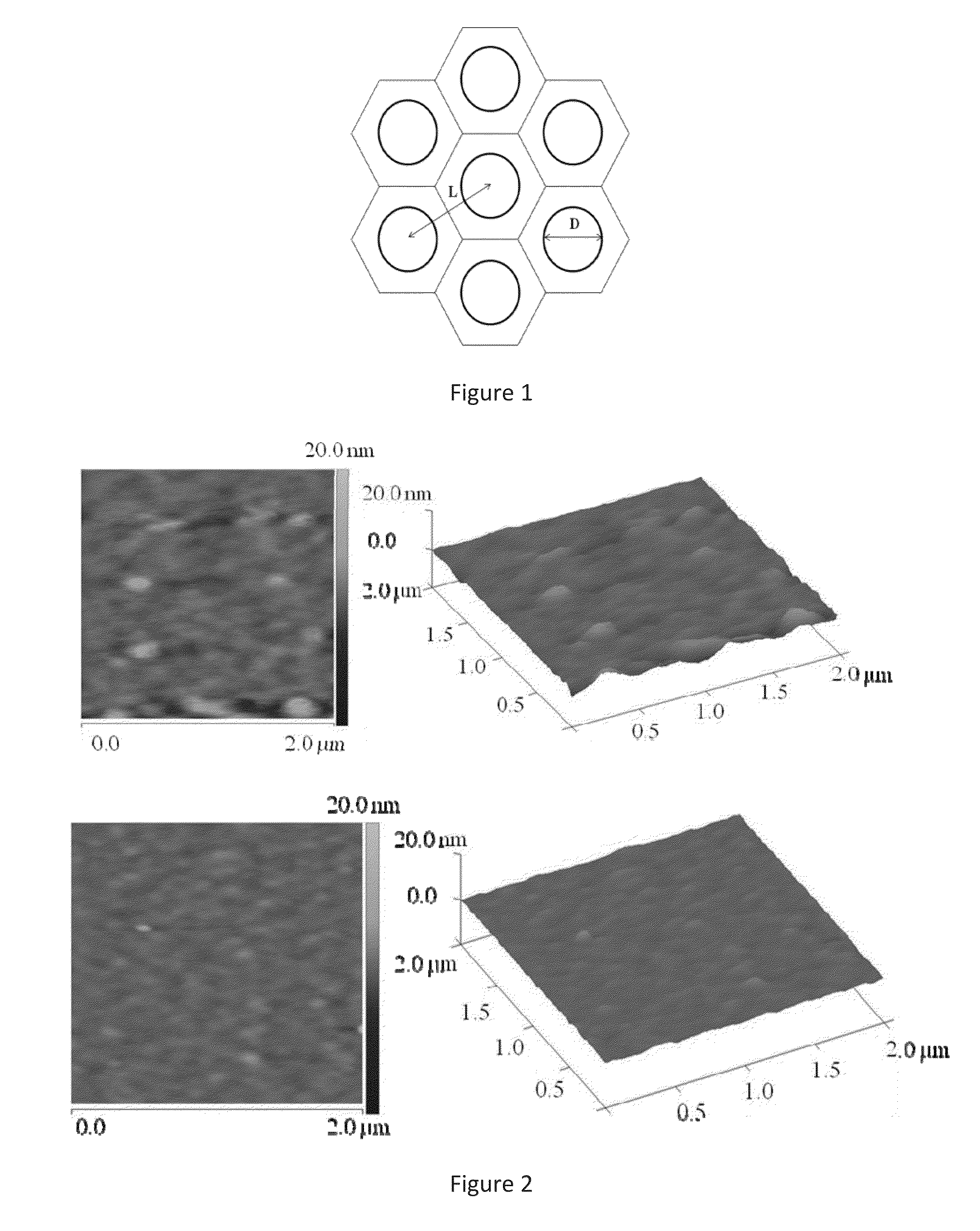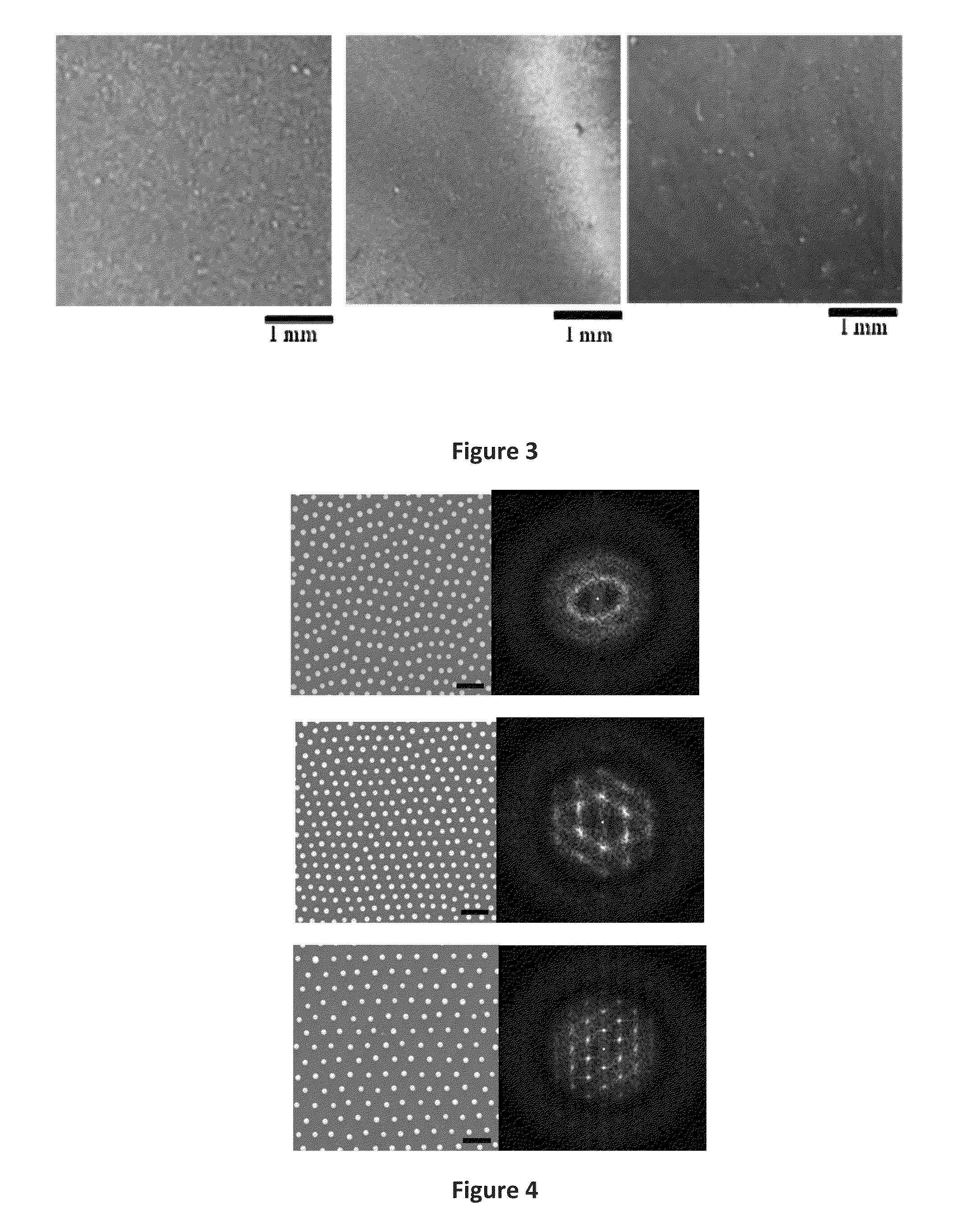Colloidal lithography methods for fabricating microscopic and nanoscopic particle patterns on substrate surfaces
a lithography and micro-nanoscopic technology, applied in the field of lithography methods, can solve the problems of inability to apply tactics based on particle deformation to particles that are not easily deformed, weak adhesion between a hard sphere and a hard surface, severe handicaps for non-planar surfaces, etc., to improve the adhesion of particles
- Summary
- Abstract
- Description
- Claims
- Application Information
AI Technical Summary
Benefits of technology
Problems solved by technology
Method used
Image
Examples
example 1
Novel Use of Polymer Brush in Colloidal Lithography to Overcome Lateral Capillary Force
[0052]This example is directed to the polymer brush method. In this example, interfacially trapped, submonolayer hexagonal arrays of silica particles were transferred to substrate surface to form nano- and mesoscopic surface patterning. Poly(n-butyl acrylate) and poly(n-butyl acrylate-random-N,N-diethylaminoethyl acrylate) brushes were grafted on the substrates via the “graft-from” method using Atom Transfer Radical Polymerization (ATRP). The polymer brush served as an adhesive promoter between the particles and the substrate and proved to be effective for locking the particles in the hexagonal lattice against the lateral capillary force arising from a thin layer of water attached to the surface of the substrate. Several parameters that influence preservation of the order of the particle arrays were examined. These include brush thickness, brush composition, interparticle distance, and particle di...
example 2
Development of Colloidal Lithography Method for Patterning Nonplanar Surfaces
[0077]This Example is directed to the polymer brush method.
[0078]In choosing the material for the adhesive layer, we took the following into consideration. First, it must have a glass transition temperature (T g) below room temperature. Further, it should possess two surface characteristics that we previously established: sufficiently high water-contact angle (advancing contact angle>70°) and surface charges opposite to the charges on the particle surface. A copolymer containing 80 mol % of n-butyl acrylate and 20 mol % of 2-(N,N-diethylamino)ethyl acrylate was synthesized to meet the above requirements. The weight average and number average molecular weights of the polymer were 33,080 and 18,690 Dalton, respectively. Tg of the bulk material was −64° C. Before the polymer adhesive was coated on the silicon substrate, the hydrophilic surface of the silicon wafer was treated with a mixture of [2-(4-chlorosulf...
PUM
 Login to View More
Login to View More Abstract
Description
Claims
Application Information
 Login to View More
Login to View More - R&D
- Intellectual Property
- Life Sciences
- Materials
- Tech Scout
- Unparalleled Data Quality
- Higher Quality Content
- 60% Fewer Hallucinations
Browse by: Latest US Patents, China's latest patents, Technical Efficacy Thesaurus, Application Domain, Technology Topic, Popular Technical Reports.
© 2025 PatSnap. All rights reserved.Legal|Privacy policy|Modern Slavery Act Transparency Statement|Sitemap|About US| Contact US: help@patsnap.com



